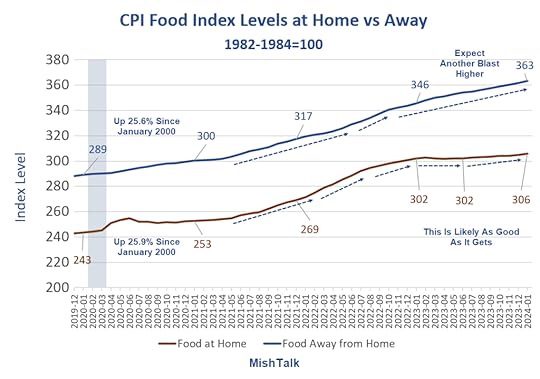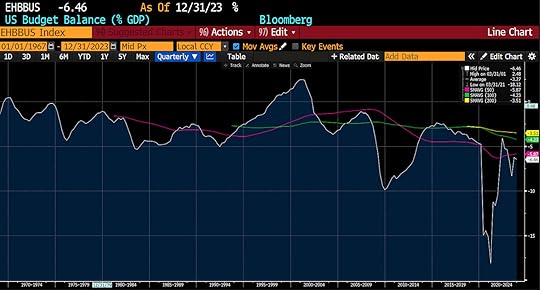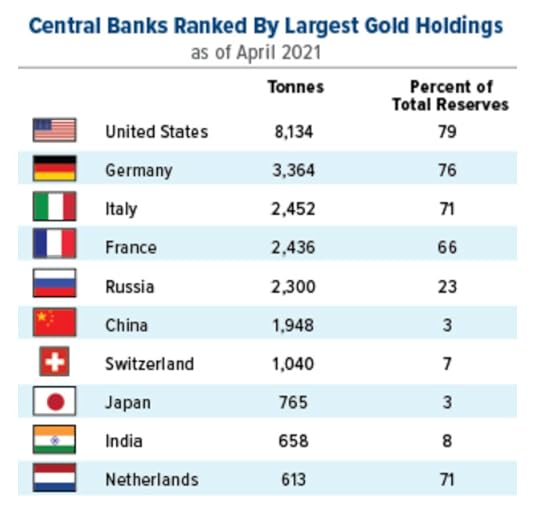Steve Bull's Blog, page 67
March 13, 2024
Fruit Chaos Is Coming
Climate change is threatening to turn sublime summer stone fruits disgusting, or rob us of their pleasures entirely.
 Illustration by Paul Spella / The Atlantic. Source: Getty.
Illustration by Paul Spella / The Atlantic. Source: Getty.Summer, to me, is all about stone fruit: dark-purple plums, peaches you can smell from three feet away. But last summer, I struggled to find peaches at the farmers’ markets in New York City. A freak deep freeze in February had taken them out across New York State and other parts of the Northeast, buds shriveling on the branch as temperatures plummeted below zero and a brutally cold, dry wind swept through the region.
The loss was severe. One farmer estimated that the Hudson Valley lost 90 percent of its stone fruit. Evan Lentz, a faculty member in the plant-science department at the University of Connecticut, told me his state lost 50 to 75 percent. Another freeze in the second half of May damaged lots of other crops, including strawberries and blueberries. In New Hampshire, apple growers who went to bed with orchards full of pink blossoms awoke to petals turning brown. Georgia, the iconic peach state, lost some 90 percent of last year’s crop—a Georgia summer without peaches, an unfathomable thing. An unusually warm winter robbed the trees of the period of cold they need to bloom in the spring. The buds that did emerge were, like the ones in the Northeast, killed by a cold snap in the early spring.
Fruit trees evolved to live in more stable conditions; they’re exquisitely well adapted to the rhythm of a usual year. But instead of reliable seasons, they’re getting weather chaos: Springtime, already somewhat of a wild-card season, “is getting more and more erratic,” Theodore DeJong, a fruit-tree physiologist at UC Davis, told me. As a result, trees’ sense of seasonality is scrambled. And instead of reliable peaches and plums, we’re getting fruit chaos. It may not happen every year, but it’s happening more frequently.
…click on the above link to read the rest…
March 12, 2024
Today’s Contemplation: Collapse Cometh LXXVI–Roadblocks To Our ‘Renewable’ Energy Transition: Debt, Resource Constraints, and Diminishing Returns
November 12, 2022 (original posting date)
 Chitchen Itza, Mexico. (1986) Photo by author.
Chitchen Itza, Mexico. (1986) Photo by author.Roadblocks To Our ‘Renewable’ Energy Transition: Debt, Resource Constraints, and Diminishing Returns
Today’s contemplation is a quick rundown of three of the roadblocks I see preventing us from achieving the utopian dream of a seamless ‘clean’ energy transition from dirty fossil fuels, or at least one as marketed by the ruling caste and leveraged by many (most?) businesses to sell their products/services (and virtue-signal their ‘progressive’ nature).
These few items have been percolating in my mind this past week or so with a number of articles I’ve perused during my morning coffee. If readers can add to these in the comments (with appropriate supportive links), I will begin to create a more comprehensive list to share periodically down the road…
Here, in no particular order, are three of the issues I’ve been pondering:
2.5 quadrillion in debt/credit [1]
For all intents and purposes, and by most observable accounts, our financial/monetary/economic systems are Ponzi-type systems requiring constant expansion/growth to keep from collapsing[2]. Many lay the beginnings of this treacherous trend upon Richard Nixon’s abrogation of the Bretton Woods Agreement that hammered the final nail in the coffin of a precious metals-based monetary system[3]. Others point to the introduction of fiat money/currencies as the initiation point, when the ‘constraint’ of physical commodities was removed from money and government/ruling elite solidified their monopoly of its creation/distribution. If one looks back even before modern fiat currencies, however, there is much written about how the Roman ruling elite were engaged in such manipulation of their money[4].
The Ponzi nature of these systems requires that perpetual growth be pursued. That such a pursuit is impossible on a finite planet should be self-evident but as I have highlighted previously we walking, talking apes are story tellers whose imaginations are creative at weaving tales to reduce anxiety-provoking thoughts — such as our ingenuity and technological prowess allows us to ignore/deny/rationalise away physical laws and biological principles and pursue infinite growth despite any bio- and geo-physical limitations.
That we have created and depend significantly upon such increasingly complex and fragile systems should give us pause, but this is rare and typically frowned upon. There seems only three basic means of dealing with such a situation: 1) inflate away the problem[5]; 2) debt jubilees[6]; 3) growth[7]. All of these approaches seem to have been used individually or in combination in history, and yet the endgame tends to be the same every time certain tipping points are reached: rejection of the monetary system of the time.
There’s been a boatload of analyses on what such a repudiation of a society’s currency system means to a people and their society[8]. While a currency ‘collapse’ does not necessarily lead to societal ‘collapse’, it does appear to throw economic systems into chaos for some time and destroy much in the way of societal ‘wealth’ and thus investment capital; and contributes to the eventual fall of a society — especially if there’s no lender-of-last-resort to ride to the rescue.
Such a situation would seem to negate the possibility of achieving the dream of transitioning to some ‘clean/green’ energy-based society given the magnitude of the debt that is currently present, the ‘wealth’ this represents, and the huge investments that would be necessary for a shift from our primary source of energy (fossil fuels).
Perhaps the most significant impediment going forward from a currency collapse would be the general lack of trust in government and financial institutions. And it is ‘trust/confidence’ that keeps these fragile systems from being totally abandoned; when it is lost, there’s no telling how quickly more widespread ‘collapse’ may occur. As archaeologist Joseph Tainter argues, it is when the economic benefits of participating in a complex society fall below the costs incurred that a populace begins to abandon its support of the various systems and ‘collapse’ can soon follow[9].
Mineral/resource constraints
That we exist upon a finite planet should also give pause to those cheerleading a ‘renewable’ energy transition in that geophysical realities limit what we can physically accomplish in terms of resource extraction and use.
Simon Michaux, Associate Professor Mineral Processing and Geometallurgy at the Geological Survey of Finland, has for some time been highlighting the impossibility of replacing our fossil fuel-based systems with non-renewable, renewable energy-harvesting technologies (NRREHT)[10].
The main hyped-up narrative surrounding the utopian future we are constantly promised by our societal leadership (both political and corporate) is that of a clean-energy future that not only sustains our present-day energetic conveniences, but allows continual expansion, technological progress, and prosperity. Dr. Michaux asserts that this is a pipe-dream because there do not exist the needed minerals to carry out such a transition from fossil fuels. Not even enough to replace and thus sustain the current level of energetic needs, let alone continuing to pursue growth.
Advocates dismiss this inconvenient reality — to say little about the environmental/ecological system damage that would result from the mining and processing of all the minerals and products required — by suggesting this can be overcome by reducing our energetic consumption/needs to a far lower level such that the finite materials can meet our needs, or developing many as-yet-to-be-hatched energy-production chickens. They also raise the arguments that recycling will guarantee perpetual resource requirements failing to understand that this is a very energy-intensive process and not as effective in reducing energy-use and pollutants as marketed[11] and are even being abandoned in many regions due to increasing costs[12].
Diminishing Returns
The human tendency in addressing resource requirements (in fact, to solve most problems) is to utilise the easiest-to-access and cheapest-to-extract ones first, leaving the more expensive and difficult ones to a later time. This, of course, means we must invest greater and greater amounts of labour/energy into extraction and processing as time passes, even to simply maintain current levels. In economic parlance, this reality has become referred to as the law of diminishing returns/productivity.
In energy circles, this tendency has been used to develop the concept of energy-return-on-energy-invested (EROEI)[13]. Basically, this is the ‘net’ energy that one derives from energy production. The greater the EROEI, the greater the amount of energy that can be used for purposes other than accessing/extracting/producing the energy in the first place. But as EROEI falls, there is less and less energy available for non-energy extraction/production systems.
We have witnessed a significant and precipitous drop in EROEI for fossil fuels[14], and the EROEI for NRREHTs is quite a bit lower than the legacy oil/gas fields that our globalised industrial world has used to grow to its present complexity; in fact, some argue that the EROEI of NRREHT is so low as to be incapable of supporting today’s globalised civilisation at anywhere near the current level of complexities[15].
A Few Other Hurdles to Our ‘Renewable-Energy’ Utopia
Here are a few additional issues that would seem to make the dream of a ‘clean’ energy future anything but doable, especially to the degree some (many? most?) imagine.
1. Current advanced-economy lifestyles require more energy than can be provided by ‘renewables’[16].
2. ‘Renewables’ require significant fossil fuel inputs[17].
3. Significant industrial processes cannot be carried out via ‘renewable’ energies[18].
4. And, perhaps most importantly, both the upstream and downstream industrial processes necessary to create, maintain, and reclaim/dispose of ‘renewables’ wreak havoc on our environment and ecological systems[19].
I could write much more on each of these roadblocks to the idea of our complex global society transitioning to NNREHT. Whether one accepts these as insurmountable or not depends very much on one’s interpretation of the data/evidence — and probably to a greater extent on one’s hopes/wishes (i.e., personal biases).
Keeping at the forefront of one’s thinking the fact that the future is unknowable, unpredictable, and full of unknown unknowns, anything is possible. But I would argue we do ourselves no favours in participating in and believing without full skepticism our various narratives about endless growth and technological ingenuity as the saviours that will make our utopian dreams/wishes of a ‘clean/green’ future come true.
Such magical thinking keeps us on a trajectory that increasingly is looking to be suicidal in nature, or, at the most promising, deeply ‘disappointing’ and broadly chaotic/catastrophic.
Time, of course, will tell…
And please note, as I have had to emphasise with others whom I’ve disagreed with regarding this ‘clean’ energy transition and NRREHTs: “… it is not that I ‘hate’ renewables or am a shill for the fossil fuel industry (the two typical accusations lobbed at me); I simply recognise their limitations, negative impacts, and that they are no panacea.”
[1] See this, this, and/or this.
[2] See this, this, this, this, and/or this.
[4] See this, this, this, this, and/or this.
[5] See this, this, and/or this.
[6] See this, this, and/or this.
[8] See this, this, this, and/or this.
[10] See this, this, and/or this.
[11] See this, this, this, and/or this.
[12] See this, this, and/or this.
[15] See this, this, and/or this.
[18] See this. It’s imperative to note here that all rationalisations of ‘clean’ industrial processes rely upon as-yet-to-be-hatched chickens such as Carbon Capture and Storage or untenable energy production such as that based upon the use of hydrogen.
Today’s Contemplation: Collapse Cometh LXXV–Decoupling Energy Use From Growth: More Bargaining
November 9, 2022 (original posting date)
 Chitchen Itza, Mexico. (1986) Photo by author.
Chitchen Itza, Mexico. (1986) Photo by author.Decoupling Energy Use From Growth: More Bargaining
Today’s short piece is a comment I shared on an article by Nathan Surendran that highlights a debunking of the idea that energy can be decoupled from growth and thus reduce carbon emissions whilst supporting continued economic expansion. Nathan has a number of great articles to read on our energy conundrum and related topics; if you’re not familiar with his writing, I recommend it.
Great piece, Nathan.
I’m increasingly coming to the conclusion that all such narratives (those that argue for the continuation of ‘growth’) are readily accepted by most since they are part and parcel of our denial/bargaining of the bio- and geo-physical limits of existence on a finite planet.
More ‘nefariously’ these stories are simply marketing/propaganda by the ruling caste and its sycophants to support their primary motivation: the control/expansion of the wealth-generation/-extraction systems that provide their revenue streams and thus positions of power and prestige. Everything, and I mean everything, is leveraged to meet this overarching goal.
For example, the idea that a massive transition to ‘green/clean’ energy and related industrial products and processes — that are marketed as ‘net zero/carbon-free’ — can alter our climate trajectory completely overlooks the significant environmental/ecological damages that such a shift would entail.
That the ruling elite has created an Overton Window such that most people buy into this tale and cannot think outside the box created is not surprising. Carbon is our enemy and can be overcome via ‘carbon-free’ thinking and products; anyone who points out the flaws in this narrative are climate change deniers or shills for the fossil fuel energy.
Nowhere in the discussion is a realisation that the knock-on effects of the significant industrial processes that are involved or necessary to transition away from fossil fuels are problematic — in the extreme. Or, that land system changes[1] created because of our constant expansion are detrimental to our hydrological systems and thus creating the extreme weather events we are experiencing — perhaps even more so than ‘climate change’[2].
That land system changes are having a significant impact on our weather patterns cannot be considered at all since the idea that we need to stop altering the landscape of our world runs in a diametrically-opposed way from the expansion and growth of our human experiment. And this, of course, undermines the ruling caste’s power base. Better to leverage crises in a way that allows status quo power/wealth structures to be maintained and/or expanded, just as the idea of decoupling does.
The growth imperative must be maintained at all costs and perhaps as importantly the idea/belief that it can be must be adhered to by the significant majority of the population (or, at least, passively accepted) so that there is little to no rejection and thus counter-narratives to it.
For despite the seeming strength of the concept that infinite growth on a finite planet is entirely possible (because of technology and human ingenuity), if a tipping point of the populace comes to understand that our pursuit of growth is what has destroyed vast portions of our planet and other species leading us deeply into ecological overshoot — and subsequently rejects its pursuit — then the entire foundation of the ruling elite crumbles. And we can’t have that!
Better to double or triple down on the propaganda and censor/ostracise counter-narratives, thus allowing the game to go on just a bit longer…
[1] See this, this, this, this, this, this, this, this, this, this, and/or this.
Twilight of the Blobs
HG Wells concocted a marvelous trick ending to his classic tale The War of the Worlds (1897). Remember: the colossal Martian tripod “fighting machines” swarm all over the planet zapping cities with “heat rays”. . . it looks like all-is-lost . . . but finally the darn things just quit marching, stop zapping, and stand down . . . the alien protoplasms at the controls (surprise ending) turn up dead and rotting inside from the action of our tiny invisible allies: the earth’s one-celled, disease-causing bacteria, to which the Martian blob creatures have no immunity!
The Gaian overtones in that story resound today as we Earthlings devise ingenious new methods to wreck terrestrial life, including ourselves. The planet seems to have some teleological drive to save itself, a kind of immune system. Notice: in all the ongoing debates about the wonders and dangers of A-I, and Bitcoin, and suffocating surveillance, nobody ever talks about the sketchy condition of the electric grid that all these worrisome phenomena utterly rely on. In our chatter over Peak Oil, there’s little awareness of oil production’s utter dependence on steady capital flows. In all the guff about centralized control emitted by Klaus Schwab and his World Economic Forum, there’s no mention of the centrifugal forces driving human affairs to re-localization, dis-aggregation of large states, and down-scaling of many activities. In our zeal to become Gods, we miss a lot.
Imagine: Bitcoin shoots up to a million dollars. You’re a zillionaire! Uh Oh. . . somewhere outside Zaneseville, Ohio, a squirrel takes a final chaw through some old insulation on a wire coming out of a transformer. His head blows up in a blue arc flash, and in a few seconds all the electricity goes out from Chicago to Boston…
…click on the above link to read the rest…
Expect Another Surge in Food Prices Fueled by Dynamic Pricing
Restaurants are moving towards dynamic menu prices. Expect big surcharges for peak times. Don’t expect off peak prices to drop much. Labor costs are rising too.
 CPI food indexes prices, data from the BLS, chart by Mish
CPI food indexes prices, data from the BLS, chart by MishSurge Pricing Is Coming to You
Restaurants are experimenting with surge pricing to deal with peak hours and staffing demand. They like it. You probably won’t.
The Wall Street Journal reports Surge Pricing Is Coming to More Menus Near You
Restaurants like San Diego-based Cali BBQ are experimenting with a form of the dynamic pricing long used by airlines, hotels and ride-hailing services. Technology providers are pitching services that enable restaurants to change prices weekly or monthly, increasing or slashing the cost of a taco or sandwich between a few quarters to several dollars, depending on demand and sales patterns.
Dynamic pricing—charging higher rates at peak times and dropping them at slower ones—has become commonplace in industries such as e-commerce, and mobile apps have made it easier for companies to study consumers’ buying and browsing and quickly adapt. Rising costs in recent years have led more retailers to implement it.
Restaurants are experimenting with the technology as the industry looks for ways to boost sales and increase profits. Many restaurants increased menu prices as labor, food and other costs have soared since 2021.
Wendy’s drew public scrutiny after the burger chain said in a mid-February earnings call that it was looking to test dynamic pricing. The chain said it would invest around $20 million in its U.S. restaurants to install digital menu boards by 2025 that could suggest items to customers and present different offerings depending on the time of day.
…click on the above link to read the rest…
Getting vacancies wrong
Like everything else that was shut down in 2020 and 2021, Britain’s job market was broken. As businesses attempted to reopen, they were faced with a massive labour shortage. Lorry drivers, for example, had all but disappeared. Skilled construction workers were also in short supply. But the biggest shortages were in traditionally low-paid sectors such as social care, retail, and hospitality.
One consequence of this “vacancy crisis,” was that it fed into a misguided neoliberal analysis of the sharp rises in prices following lockdown. A proportion of the price increases were “monetary inflation” – the result of people spending the excess currency creation used to fund business support and workers’ furlough payments during lockdown. But the majority of the price rises were simply the manifestation of a global economy attempting to incorporate and overcome broken supply chains. Nevertheless, economists, journalists, and politicians began regurgitating the myths of the 1970s, and especially the fabled “wage-price spiral” in which higher wages would force prices to rise even further.
In those sectors of the economy where skilled workers were in short supply, wages did rise. But the majority of vacancies were – and are – in low-skilled sectors where pay has remained depressed. According to Office for National Statistics data, 814,000 of the total 932,000 current vacancies are in traditionally low-paid services; 401,000 in retail, hospitality and social care. Nor is that low-pay merely a choice by business owners. Rather, it is the result of decades of neoliberal austerity which has forced retail, hospitality, and social care businesses to be among the leanest and most cost-conscious in the economy. Prior to the pandemic, this had the benefit (although not for the workers) of keeping those services cheap – a core purpose of neoliberalism. But it also meant that, faced by labour shortages for the first time in decades, these businesses simply couldn’t afford higher pay because they were already cut to the bone.
…click on the above link to read the rest…
Israel Making Preparations To Launch Invasion Of Southern Lebanon
Israel has continued signaling that it is preparing to launch a major new operation against Hezbollah in southern Lebanon following months of tit-for-tat escalation. Some 80,000 Israeli residents whose homes are near the border have remained evacuated since October and November, and are essentially internally displaced. Because of this, pressure has mounted on Israeli leaders to do something that would allow their return, and ensure the security of Israel’s north.
Israeli media, particularly YNet News reported on Sunday that the Israel Defense Forces (IDF) is preparing “contingency plans” for a wide-scale attack on Lebanon. Israeli Army Northern Command head Major General Ori Gordin in a meeting with settler leaders from northern Israel stated, “We are preparing contingency plans to launch an attack in Lebanon. Our commitment, mine, is to change the security situation so that the residents can be returned home.”
 Via AFP
Via AFPYNet further unveiled plans to initiate the army’s “Operation Steady Anchor” which aims to protect civilians during the expected escalation in fighting. Hezbollah is widely estimated to possess over 150,000 rockets – some of which can likely reach Haifa and Tel Aviv.
The operation involves setting up dozens of mass shelters utilizing fortified abandoned buildings and underground parking garages. This is to protect civilians in the instance of a mass Hezbollah rocket barrage. The shelters will be equipped to allow families to take refuge anywhere from a few hours to up to several days.
In another key sign of Tel Aviv’s war preparations, the IDF has been conducing a logistics supply drill focused on its northern bases and positions, and in preparation for a Lebanon offensive This has included practice runs delivering ammo, equipment, water, and fuel to simulated “maneuvering forces” operating in southern Lebanon.
…click on the above link to read the rest…
Only the US Can Destroy the US Dollar

Being the reserve currency has enormous benefits. And in the entirety of financial history, the US is the first and only fiat reserve currency. Sterling, and any other reserve currencies derived their value from the ability to maintain their value to gold. With the two World Wars, the US came to be seen as the government most able to honour its commitments, and saw huge inflows of gold, but in the 1960s, gold started to flow back to Europe and elsewhere, and in essence, Nixon decided that higher interest rates needed to maintain the link to gold price was not worth the effort, and cut the link to gold price.

Moving from a gold based currency to a fiat currency has had enormous benefits for the US. First of all is that it no longer needs to ever run a current account surplus. That is it never needs to reduce consumption or imports, which is a huge political benefit. The norm since 1980 is for the US to have a current account deficit.

The US also does not need to balance the budget. The budget was balanced in 2000, but this was probably now seen as a tactical error on the part of the Democrats.

What I find most interesting about the transition from gold to US treasury backed financial system is how Asian nations, despite a long history of using gold, accepted this system. China and Japan have some of the largest foreign reserves in the world, but their holdings of gold are limited. Even India holds a relatively small amount of gold as foreign reserves.

…click on the above link to read the rest…
March 11, 2024
Today’s Contemplation: Collapse Cometh LXXIV–Our Ruling Class: Always Pushing In the Wrong Direction
November 7, 2022 (original posting date)
 Chitchen Itza, Mexico (1986). Photo by author.
Chitchen Itza, Mexico (1986). Photo by author.Our Ruling Class: Always Pushing In the Wrong Direction
A very brief contemplation that is a comment I posted on the Honest Sorcerer’s latest piece of writing.
It’s pretty self-evident (at least to everyone outside of the hypnotic manipulation of US propaganda) that the American ruling caste cares little (if at all) for any other group of people or nation — not even their own domestic population (or some in their own ranks). Of course, it’s also not hard to argue that this is true of any society’s ruling caste. Their primary motivation is the control/expansion of the wealth-generation/-extraction systems that provide their revenue streams and thus positions of power and prestige. Everything else is secondary/tertiary and even these are leveraged to help the primary goal.
While the endgame of all the machinations of our elite seems fairly obvious (complete and devastating global collapse of industrial civilisation — perhaps even worse — given how deeply into ecological overshoot our species is), it’s frustrating (to say the least) for those of us who view the world through the complexities that go beyond geo/politics and economics (i.e., include ecology, biology, physics, psychology, etc.) and understand the need for global leadership that differs significantly from that being shown by the sociopaths that do wield ‘power’ in our world.
Throw in the divisions that even exist within those circles that understand our overshoot predicament and how best to address this (I think of those who beat the drum about sustaining our complexities via some magical ‘clean’ energy transition — which is being leveraged by the elite to pillage national treasuries and peoples even further), and that endgame I mention above seems baked in at this juncture.
Attempting to make one’s local community as self-sufficient as possible in these crazy times seems the only sane course of action. Getting people on board with such a pursuit when society’s ‘leaders’ are pushing with all their might in the exact opposite direction[1] is, however, a task in and of itself — particularly when those who question mainstream narratives are increasingly being censored, vilified, deplatformed, ostracised, and even criminalised.
[1] Example of this insanity by my province’s government here.
Today’s Contemplation: Collapse Cometh LXXIII–Pessimists Are Optimists That Have All the Facts
October 31, 2022 (original posting date)
 Chitchen Itza, Mexico (1986). Photo by author.
Chitchen Itza, Mexico (1986). Photo by author.Pessimists Are Optimists That Have All the Facts
This contemplation has been prompted by another great article by The Honest Sorcerer. If you’ve not read their work, I highly recommend it.
A couple of thoughts in reading your splendid piece (they always serve as a springboard for some reflection regarding my own thinking).
First, I have to wonder if the notion that most citizens in democratic societies have of ‘democracy’ (that they have agency via the ballot box) has ever truly existed. It seems to me that this idea has been perpetrated by the ruling caste of society in order to help legitimise their somewhat precarious positions of power so as to avoid mass protests and revolution. If people believe they have a say in how a society is organised and the policies it adopts, they are less likely to withdraw support or participate in resurrection. This widely believed narrative seems to me to be one of the most successful frauds/scams (along with the fiat currency monetary system) ever perpetrated upon the hoi polloi. It’s not that we’ve lost it; we never truly had it — it was simply more believable in the past for a variety of reasons (not least of which has been the increasing difficulty of keeping the fraudulent aspects and wealth siphoning hidden due to significant surplus energy and other resources that have served to mollify the masses — paying off one’s supporters with a small portion of the ill-gotten loot has its benefits).
Second, what you argue about the economic realm of our world (basically, that it is held together by magical thinking that denies bio- and geophysical reality, and ‘creative’ accounting) seems so self-evident but is so raggedly opposed by almost all (perhaps because none of us truly wants to look behind the curtain of the gargantuan Ponzi scheme we are all a part of). The ‘priesthood’ of economists that weave narratives to help society deny/ignore/rationalise away the barriers to perpetual growth upon a finite planet (and the negative consequences of such a pursuit) seems to hold a mesmerising sway upon the land. Their stories of growth/progress dominate almost all aspects of our lives, but especially the political realm — what politician doesn’t promise the glittering chalice of a constantly improving, prosperous, and growing society? Speaking truth to power about limits has little discernible benefit when on the campaign trail; better to promise endless improvement, especially when there’s no real accountability to such a false promise.
Given that we walking, talking apes are prolific story-tellers in our quest to share our understanding of this complex universe we exist within, I expect the narratives that aid our ruling elite in sustaining/maintaining their positions of power, prestige, and wealth to harden in the sense of increased vilification/censorship/ostracization (perhaps even criminalisation) of dissenting voices.
In addition, the human penchant for denial/anger/bargaining in the face of anxiety-provoking realities will lead to many (most?) rejecting the thesis that ‘collapse’ can or will befall us — even when it is too obvious to ignore. The stories told are already in desperate straits to counter the self-evident nature of our decline and the consequences of ecological overshoot and quickly dwindling resources. Counter narratives about the need for degrowth are slowly bubbling up to the surface of the mainstream/legacy media. Collapse (i.e., death of our global-industrial complex society), however, will be rejected by people because that is our nature — optimism bias is real and greatly impacts our thoughts about the future.
It’s difficult to go against the majority narrative that all is well and any perceived ‘crisis’ is the result of some evil ‘other(s)’; however, I am reminded of a recent meme that I saw: ‘Pessimists are optimists who have all the facts’. ‘Collapse’ cometh most assuredly but as has been argued: it’s difficult to make predictions, especially if they’re about the future.
P.S.
My ten-year old thoughts about Orlov’s text on collapse: https://olduvaiblog.wordpress.com/2013/06/18/collapse-of-trust-and-faith-in-the-system/



